Spain's Famous Round Cake for The Epiphany
Friday, January 2, 2026
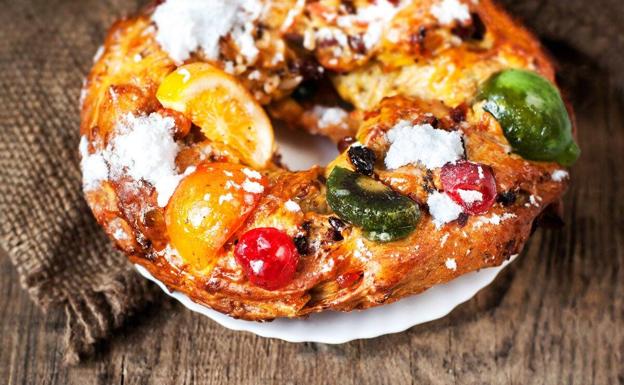
Twelfth Night is the festival marking the coming of the Epiphany and concluding the Twelve Days of Christmas. In medieval and Tudor England, the Twelfth Night marked the end of a winter festival that started on All Hallows Eve — now more commonly known as Halloween. The Lord of Misrule symbolises the world turning upside down. On this day the King and all those who were high would become the peasants and vice versa. At the beginning of the Twelfth Night festival, a cake that contained a bean was eaten, and the person who found the bean would rule the feast. Midnight signalled the end of his rule and the world would return to normal. The common theme was that the normal order of things was reversed.
The origins of the Three Kings' Cake appear to date back to the 2nd century BC, when the Romans celebrated the Saturnalia – also known as the Slaves' Festival as they didn't have to work – with a round pastry that concealed a bean. The bean symbolised the imminent arrival of prosperity thanks to the Spring and to Saturn, the god of agriculture. Its symbolism has changed greatly since then, and the recipe even more-so. The Romans spread it across Europe, but its consumption died out with the arrival of Christianity. However the French preserved the tradition and it was common among bourgeois families to eat the cake, which they prepared with a coin inside it.
Food and drink are at the centre of the celebrations in modern times, and all of the most traditional ones go back many centuries. Around the world, special pastries and bread, such as Roscón de Reyes, La Galette des Rois and King cake are baked on the Twelfth Night and are eaten for the Feast of the Epiphany celebrations. In English and French customs, a Twelfth Night cake was baked to contain a bean and a pea, so that those who received the slices containing them should be designated king and queen of the night’s festivities.
Over the centuries this tradition has changed. Gold coins began to be introduced as a reward to whoever found the Roscón treasure, it was later decided to hide a figurine of King and a bean at the same time to find out who was the 'lucky one' and who was the fool with the bean ... until today. Nowadays most Roscón have the figurine of a King and dehydrated bean, only now the person who finds the bean is not only the fool but also has to pay the cake!
Traditionally, however, there was a time in Spain when whoever found the trinket (which would have been a figurine of baby Jesus) had to take it to the nearest church on February 2, Día de la Candelaria (Candlemas Day), which celebrates the presentation of Jesus in the Temple. According to the Jewish tradition, an infant was to be presented to God in the Temple forty days after his birth. The use of candles on Candlemas represents the light of Christ presented to the world. The Kings’ cake (Roscón) in Spain is traditionally eaten after lunch on the 6th of January and if you fancy making one this year, here is a simple recipe:
Ingredients:
Sourdough mix:
100 g of strong flour
60 ml of warm milk
2 g yeast
Decoration:
1 beaten egg
Glacé fruits
Almonds
Sugar
For the final dough:
162 g of sourdough
330 g of strong flour
60 ml of milk cooked with cinnamon and the peel of 1 orange
2 eggs
80g sugar
30 ml of honey
110 g butter
15 g of pressed yeast (or 5 g of dry baker's yeast)
3 teaspoons of rum
2 teaspoons of random water
Zest of half a lemon
5g salt
Preparation:
The day before, prepare the sourdough. To do this, mix the flour, milk and yeast and knead it sufficiently so it is well mixed.
Let it ferment for 30 minutes at room temperature and then leave it in the fridge for at least 12 hours.
The night before you also have to make the milk infusion with, cinnamon and the peel of 1 orange without the white part. Heat the milk with the ingredients to just before boiling point and then remove from the heat and cover. Let it cool and then refrigerate.
The next day, mix all the ingredients for the final dough, except the sugar and butter.
You will have to knead it in 3 steps:
1) 5 minutes as is.
2) 5 minutes in which the sugar is incorporated in 2 batches until you can see no lumps are left each time.
3)Now the cold butter is added and kneaded for another 10 or 15 minutes until the dough has absorbed all the butter and is smooth.
Let it ferment for about 2 hours. Form into a ball. Wait 15 minutes and then form into an even ring
Ferment for another 2 and a half or 3 hours: it almost triples its volume (then hide the figurine and the dehydrated bean).
Brush, decorate and bake in an oven at 180 ° C. Baking time is about 20 minutes (if fan assisted; if not, slightly longer).
Let cool on a rack. Once cold, the roscón can be cut in two halves and filled with sweetened whipped cream or truffle cream, as you prefer.
However, if this seems like too much effort they are available in all supermarkets across the country. According to one of Spain's leading consumer organisations, the OCU, after analysing Roscones in nine major supermarkets, the best value-for-money Roscón de Reyes comes from Día and retails at €11.71 for a kilo.
The OCU looked at Roscones sold in Eroski, Carrefour, Alcampo, El Corte Inglés, Ahorramás, Mercadona, Lidl, Aldi and Día, and said the best quality ones were the cream-filled versions from Eroski and Alcampo, followed by those sold at El Corte Inglés, although in terms of price and quality combined, Día's cream-filled one came out top.
They retail at between €6 a kilo in Carrefour, Aldi and Lidl, and €17 a kilo in El Corte Inglés, although the OCU warned that in most cases, the cheapest prices reflected the quality of what you're buying.
Those with the lowest price tags, in general, had a greater quantity of vegetable oils and fats – coconut and palm oil – compared with the higher-priced ones, which contained cream and butter.
This said those seeking to avoid animal-based produce would find the cheaper ones suited them better.
Whatever you decide to do - Happy New Year!
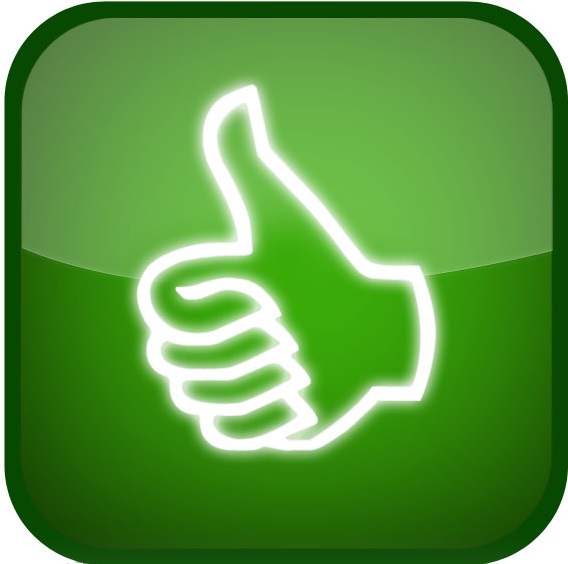 2
Like
Published at 6:38 PM Comments (0)
2
Like
Published at 6:38 PM Comments (0)
Cava Recommendations for New Year's Eve
Friday, December 26, 2025
Made in the same method as Champagne, Cava is Spain's sparkling wine treasure. Originating from the Penedès region of northeast Catalonia (just west of Barcelona), cava is made with three local varieties: Macabeo, Xarel-lo, and Parellada. Cava's claim to fame lies in its remarkable quality-to-price ratio. Top-quality cava is widely available for under €10 with many regional producers presenting their best bubbly in sophisticated bottles and leaning heavily on family-owned, tradition-inspired values. Here some to consider for the coming festive season! Take your pick, you can't go wrong with any of them...
Freixenet Sparkling Cordon Negro Brut Cava - €6,49
Freixenet

One of the best-selling Cavas on the market, Freixenet Sparkling Cordon Negro Brut Cava offers up exceptional citrus and toasted almond notes on the nose. Built on the region's three dominant cava grapes (Macabeo, Xarel-lo, and Parellada), this medium-bodied sparkling wine carries a fresh factor, lively acidity, and unmistakable balance on the palate.
Anna de Codorniu Cava Brut - €6,88
Codorniu Winery
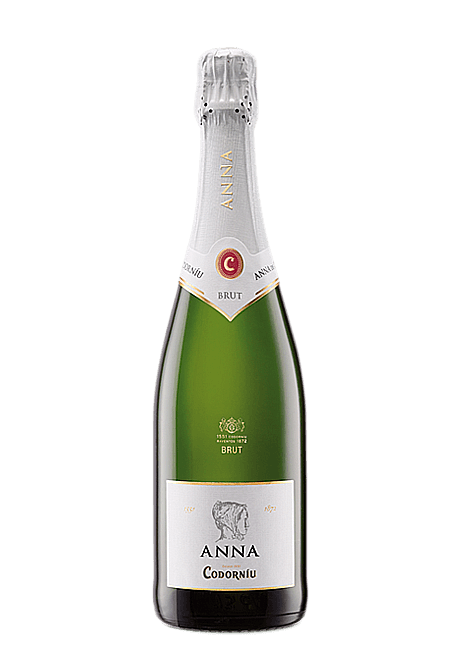
Crafted from a 70/30 split of chardonnay and Parellada grapes, the Anna de Codorniu Cava Brut shows a lovely bouquet of ripe apple, plush tropical fruit, and the yeasty appeal of fresh-baked bread. The palate reveals a continuation of fresh-fruit themes, centred around green apple, pear, quince, and lemon-lime citrus. Crisp and clean.
Segura Viudas Brut Reserva Cava - €9,99
Segura Viudas
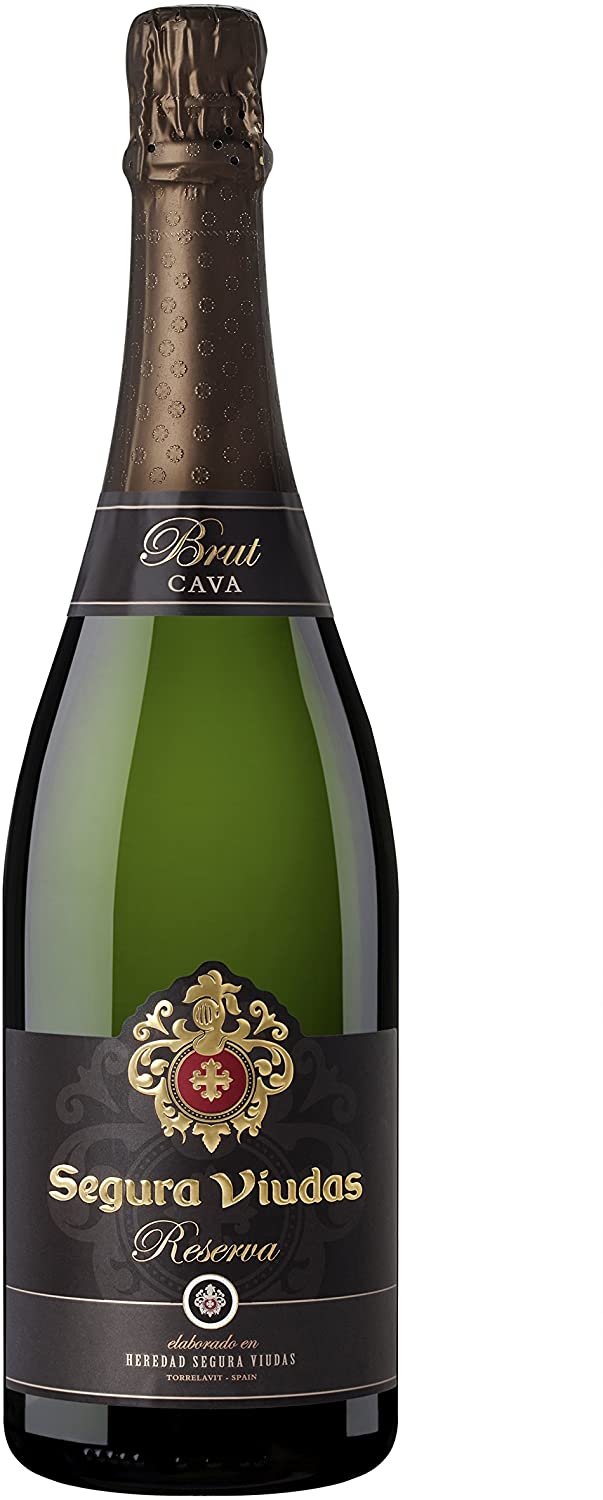
Bringing some serious value—not to mention bubbles—to the table, Spain's Segura Viudas Brut Reserva Cava showcases an engaging blend of nutty nuances and a dash of citrus on the nose.
The palate profile is fresh, with zippy acidity, bright lemon-lime fruit, and apple undertones. A remarkable sparkling wine for the price, this cava is made with a blend of regional grapes: Macabeo, Parellada, and Xarel-lo.
Perfect for parties, keep the Segura Viudas Brut Cava in mind for appetizers, shellfish themes, tapas, and a variety of poultry picks.
Juve y Camps Brut Rose - €13,25
Juve y Camps Winery
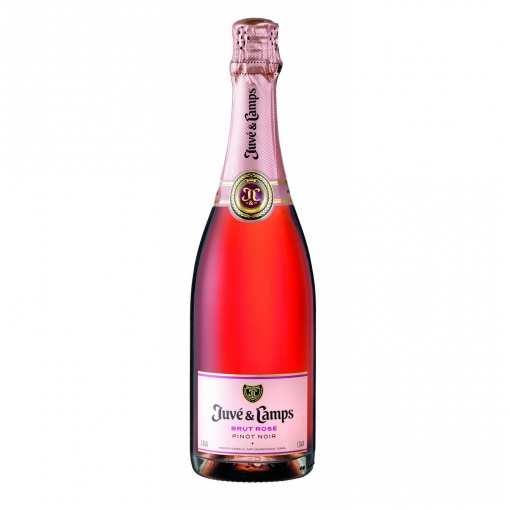
Vivid salmon colour (thanks to Pinot Noir) and bright berry fruit with engaging floral notes on the nose make up this cava's first impressions. The palate doesn't disappoint, carrying almond essence and strawberries with cream, bright acidity, and an underlying elegance from attack to a spicy finish. This Juve y Camps Rose Brut Cava is perfect for cured meat and smoked salmon crostini.
Segura Viudas Brut Reserva Heredad Cava - €22,90
Segura Viudas
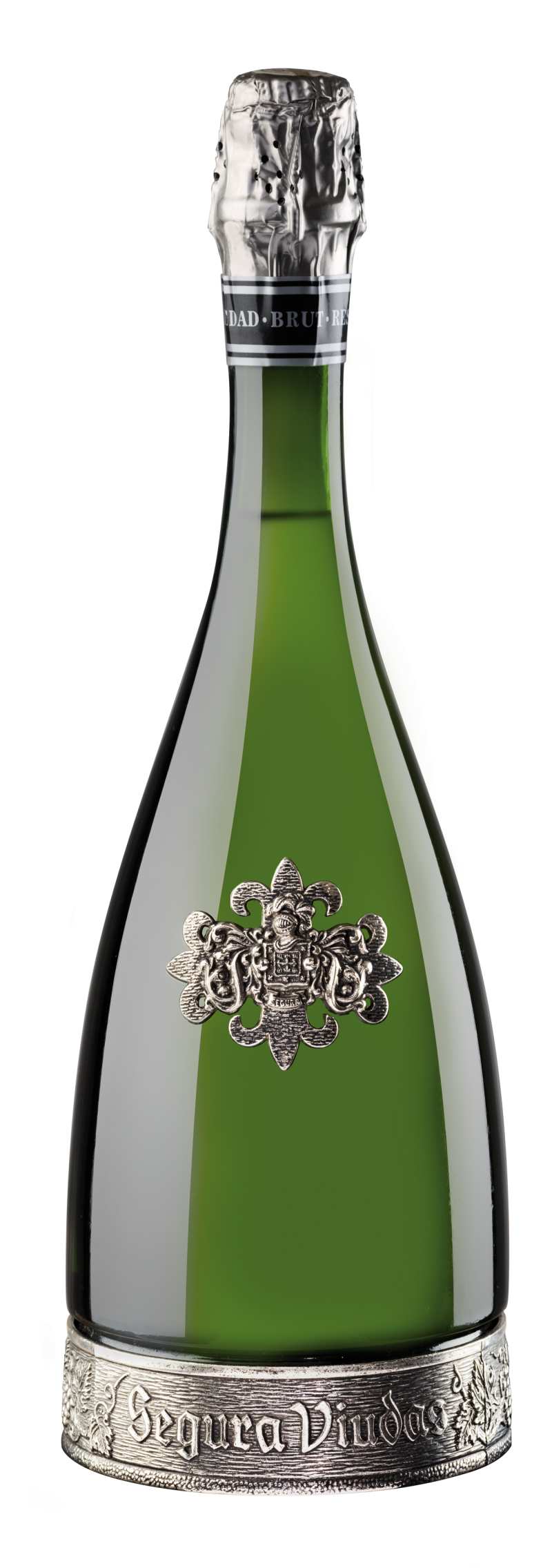
From the heart of Penedès, Spain's sparkling wine centre, this Reserve Cava is crafted from all estate-grown fruit (Macabeo and Parellada). Thirty months ageing on lees explains the toasted brioche and smoky aromatic apple on the nose and gives this cava a creamy elegance and fuller-body on the palate. The fruit is well integrated with apple, quince, and some citrus weighing in alongside a mineral-driven finish. Rich, expressive, and focused, the Segura Viudas Brut Reserva Heredad Cava is made for caviar, roasted poultry, or pork.
Elyssia Pinot Noir Brut Cava - €9,95
Freixenet

A fantastic Cava pick, this lovely sparkling Rosado is brimming with the ripe aromas of raspberry and cherry fruit. On the palate, red fruit steals the limelight buffered by bubbles and balanced with optimized acidity. There is plenty of class in this glass and at only €9,95 a bottle, this Elyssia Pinot Noir Brut Cava is perfect for celebrations, picnics, appetizers, and tapas.
 1
Like
Published at 3:44 PM Comments (1)
1
Like
Published at 3:44 PM Comments (1)
Popular Spanish Seafood Recipes for Christmas
Friday, December 19, 2025
Spain, a nation steeped in rich culinary traditions, boasts diverse gastronomy that varies from region to region. However, one universal aspect of Spanish cuisine during Christmas is the significant emphasis on seafood and fish dishes. This lean, flavourful fare of the Mediterranean is a choice of food over Christmas, celebrated through a variety of popular recipes. Let's take a look at some:
1. Langostinos a la Plancha

'Langostinos a la Plancha' or grilled prawns is a perennial Spanish Christmas favourite. This dish is exceptionally straightforward, consisting merely of fresh prawns, sea salt and olive oil. The key to perfection lies in grilling the prawns on high heat for just the right amount of time to attain a deliciously chargrilled flavour while ensuring the prawns remain tender.
2. Gambas al Ajillo

'Gambas al Ajillo' or garlic shrimp is another beloved Spanish classic. Sautéed in a simmering mixture of garlic, hot peppers, and olive oil, these succulent morsels are imbued with a rich, spicy flavour that will warm up any Christmas gathering. The dish is traditionally served in a 'cazuela' (terracotta dish), accompanied by crusty bread to mop up the savoury sauce.
3. Merluza a la Koskera
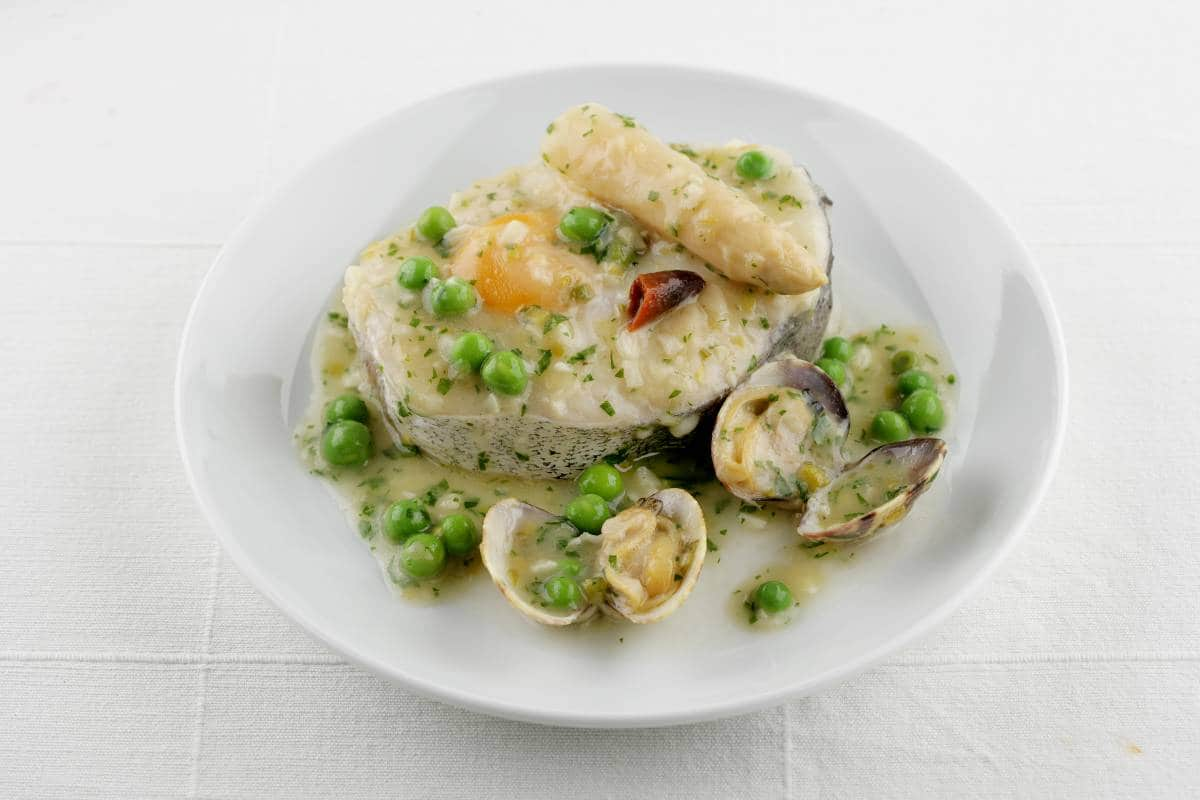
Merluza a la Koskera, also known as Hake in Green Sauce, is a traditional Christmas dish hailing from Spain's Basque country. This recipe features hake fillets cooked in a fragrant sauce made of garlic, parsley, and white wine. It is then garnished with clams and white asparagus, offering a warming, filling main course for Christmas dinner.
4. Bacalao a la Vizcaina

Bacalao a la Vizcaina, or Salt Cod in Biscayne Sauce, is a renowned Spanish dish traditionally eaten on Christmas Eve. The cod is first desalted by soaking it in water for a couple of days before being cooked in a rich and complex tomato and red pepper sauce. This flavourful dish is an integral part of the Spanish 'Nochebuena' (Good Night) celebration.
5. Calamares en su Tinta

'Calamares en su Tinta,' or Squid in its Ink, is another unique recipe commonly served during the festive season in Spain. This Basque Country speciality comprises tender squid pieces cooked in a rich, black sauce made from the ink of the squid. The result is a delightfully briny and robust dish that pairs well with white rice
6. Zarzuela de Mariscos

Zarzuela de Mariscos, or Seafood Medley, is a grand celebration of the bounty of Spanish seas. It comprises a harmonious blend of fish and shellfish, such as monkfish, prawns, mussels, and clams, cooked in a deeply flavoured tomato, onion, and white wine broth, aromatic with saffron and paprika. Decorated with crusty bread and rustic aioli, this Catalan classic is a quintessential centrepiece for a Spanish Christmas feast.
Spain's vast array of seafood delicacies pays testament to the country's rich maritime culture and tradition. The fusion of simple yet high-quality ingredients yield dishes that don't just grace the Christmas table but also represent the heart of Spanish celebrations – unity, warmth, and abundance. Enjoy these delectable seafood dishes for a distinctive and memorable Spanish Christmas!
 2
Like
Published at 3:59 PM Comments (0)
2
Like
Published at 3:59 PM Comments (0)
Pouring Asturian Cider
Saturday, November 22, 2025
In Spain’s northern region of Asturias, cider pouring is more performance art than simple table service. At local cider bars, known as "sidrerias", waiters remove the cork, then raise the open bottle high up into the air, at maximum arms length. One hand tips the bottle, while the other catches the cloudy cider in a wide glass held at waist height until it’s roughly a quarter full.
The servers aren’t just putting on a show, they’re actually enhancing the taste of the cider. Asturian cider has a few unique characteristics: It comes from five varieties of apple that are fermented into an interesting fusion of flavours, it contains around 5 per cent alcohol, and most importantly it is almost entirely flat. This cider has no sparkle! The long drop into the glass creates a splash that supplies much-needed effervescence and foam, which in turn help to release the cider’s aromas. Since bartenders might spill a few drops of precious cider in the process (perhaps due to all their cocky no-look pours), some restaurants litter the floor with sawdust to absorb the constant splashing or spills.
This can actually be quite fun, especially at family gatherings so why not have a go and see who can pour the best glass of Asturian cider. Here is a video to help you get started! Cheap bottles of "natural Asturian cider" can be found in all supermarkets across Spain at anything from €1,5 the bottle, so don't worry too much if the most of the first bottle ends up on the floor!
 1
Like
Published at 12:36 AM Comments (0)
1
Like
Published at 12:36 AM Comments (0)
A Treasure in the Bank of Spain
Friday, November 7, 2025
Goya, Sorolla, Madrazo, Chillida ... the banking institution has presented a catalogue with its collection of paintings and sculptures in order to bring them closer to the general public.
It is well known that the Bank of Spain has the largest gold warehouse in the country with a bomb-proof vault that jealously guards thousands of ingots of the gold that constitute only a part of the 283 tons of national reserves. Much less known is the other precious treasure that the institution conserves in the form of paintings and sculptures, a very rich historical-artistic heritage that it has been amassing throughout its 235 years of existence, and which from now on will be more accessible to the general public.
Undoubtedly more valuable than the ingots that the so-called "Gold Chamber" of this emblematic building on Calle Alcalá keeps safe and sound 35 meters underground (each piece weighs 12.5 kilos and has a value of around 600,000 euros), are the Goya, Sorolla, Madrazo, Zuloaga, Tàpies, Chillida ... treasured by the Bank of Spain. They are all part of the Catalogo Razonado presented yesterday by the organization and which includes its impressive collection of works of art in three volumes, made up of 1,400 pieces by almost 500 Spanish and foreign authors. At the same time, the bank launched its first heritage portal, which makes this fabulous artistic wealth available to everyone.
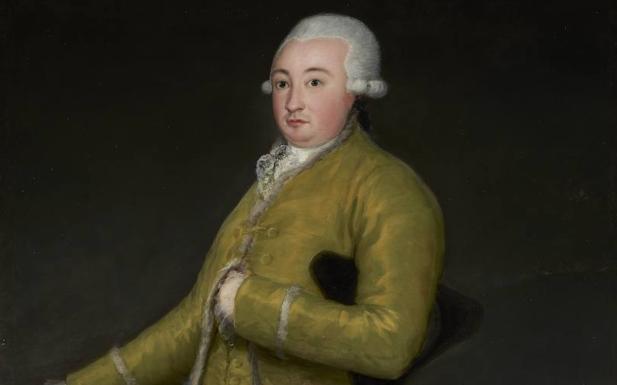
The new catalogue revises and updates another one from 1985 only dedicated to painting, the main discipline represented in the collection. In the current edition, the field of study has been extended to sculpture, drawing and photography.
The three volumes reproduce with great quality each of the 1,400 works in a collection founded over the centuries on the basis of acquisitions, commissions and inheritances from the banks that preceded it. Each one is accompanied by its historical documentation, along with critical comments provided by 22 specialists, as well as the biographies of the artists.
Volume I includes the classical art section: 263 pictorial jewels produced from the 15th century to the first decades of the 20th, and where there are many portraits of the first directors and governors of the Bank of Spain, along with kings and heads of state, who have marked the history of the banking institution since the end of the 18th century. In the words of Javier Portús, head of Conservation of Spanish Painting at the Prado Museum, and author of two of the essays included in this first volume, it is “one of the best collections that exist to study the evolution of the official portrait in Spain since the end of the Modern Age and throughout the Contemporary Age ».
Among these works is a portrait of the Minister of Finance and later Governor of the Bank of Spain in 1877, Pedro Salaverría, painted by Federico de Madrazo and which is considered one of the bank's best canvases. Like a painting of the financier and diplomat of French origin Francisco de Cabarrús signed by Goya in 1788, the last work that the Aragonese genius did for the Bank of San Carlos, the direct predecessor of the Bank of Spain.
Volumes II and III contain more than 1,100 works that make up the contemporary art collection, dating from the middle of the last century to 2018. The pieces corresponding to the 21st century have focused on European and Latin American art.
To discover this unique collection online follow this link https://coleccion.bde.es/wca/es/
 3
Like
Published at 9:17 PM Comments (0)
3
Like
Published at 9:17 PM Comments (0)
The Mysterious Pilgrim of Santiago
Friday, October 31, 2025
 Every night in a corner under the baroque clock tower in the Plaza de la Quintana, a hunched pilgrim appears. He stands life-sized and wears the traditional garb of the religious pilgrim: cloak, broad-brimmed hat, and a staff top-heavy with a gourd for water and the traditional scallop shell, which is the symbol of the pilgrim. Every night in a corner under the baroque clock tower in the Plaza de la Quintana, a hunched pilgrim appears. He stands life-sized and wears the traditional garb of the religious pilgrim: cloak, broad-brimmed hat, and a staff top-heavy with a gourd for water and the traditional scallop shell, which is the symbol of the pilgrim.
Upon closer inspection, the pilgrim is a trick of the light - and an unintentional one. His body is the shadow cast by the lightning rod pillar in the corner, and his staff is the shadow of the support column of the Berenguela clock tower. There are dozens of these lighting rods and hundreds of vertical supports in the cathedral exterior, but only one pilgrim.
According to local legend, the pilgrim is a local priest, who had fallen in love with a nun of the convent of San Paio, across the plaza. They met every night secretly, travelling through a secret passage under the Quintana stairs that join the convent to the cathedral. The two lovers planned to elope, and he promised to meet her in the plaza dressed as a pilgrim to conceal his identity. On the appointed evening, he waited in the shadows, but she never came. Since then, every night he returns, hoping to see her.
Dressing as a pilgrim is a good disguise in a city that has historically been flooded with them. Pilgrims have been coming to Santiago de Compostela for more than a thousand years, walking the miles from France through the well-worn route of the Camino de Santiago. They came to receive the blessings and forgiveness of sins from the body of the Apostle James, purportedly buried in the cathedral.
The story of the discovery of the bones of St. James (Sant-Iago) has the flavour of medieval fervor: In the year 813, when most of Spain was under Islamic rule, a hermit, guided by heavenly light (the Campus Stellae, or field of stars in the city name), discovered the previously unknown tomb of the apostle, somewhat improbably in far Northern Spain. The bishop at the time determined that the bones had arrived in 44 AD by an unmanned, rudderless boat following the decapitation of James in Palestine. A shrine, and then a church, and finally a cathedral was built over the site of the discovery, and the pilgrimages began.

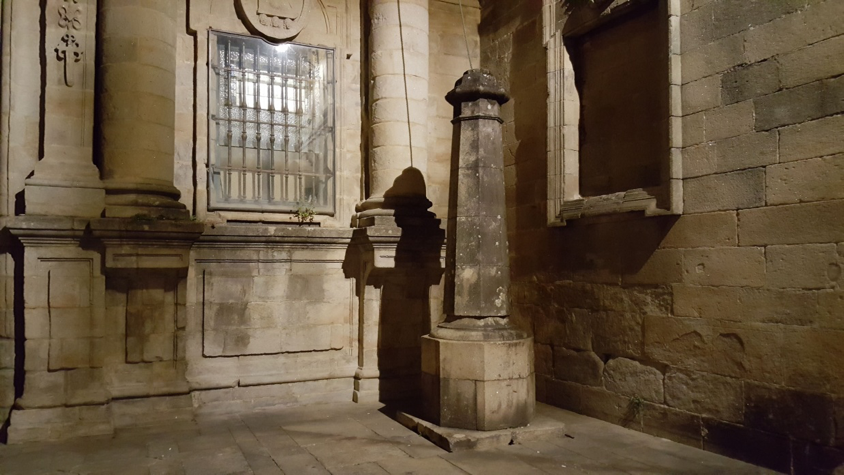
If in Santiago de Compostela.....Walking from the north-east corner of the cathedral complex through the Plaza de la Quintana, towards the front of the cathedral, walk down the first set of stairs into the large plaza area. Look for the deep corner between the base of the clock tower and the Royal Door. The pilgrim is behind the lightning pillar as you can see in the photo.
 4
Like
Published at 9:54 PM Comments (0)
4
Like
Published at 9:54 PM Comments (0)
Valencia: The Spanish City Named Best in the World for Retirement
Saturday, October 11, 2025
As the concept of retirement shifts from winding down to embracing a second, vibrant chapter, more people are looking abroad for the ideal blend of climate, culture, and cost of living. According to a new ranking by the American financial portal Live and Invest Overseas, one Spanish destination has claimed the top spot globally: Valencia.
The city on the Mediterranean coast was recently chosen as the "best city in the world to retire," an international recognition that underscores its decades-long reputation as an ideal haven for those seeking both comfort and an active, affordable lifestyle.
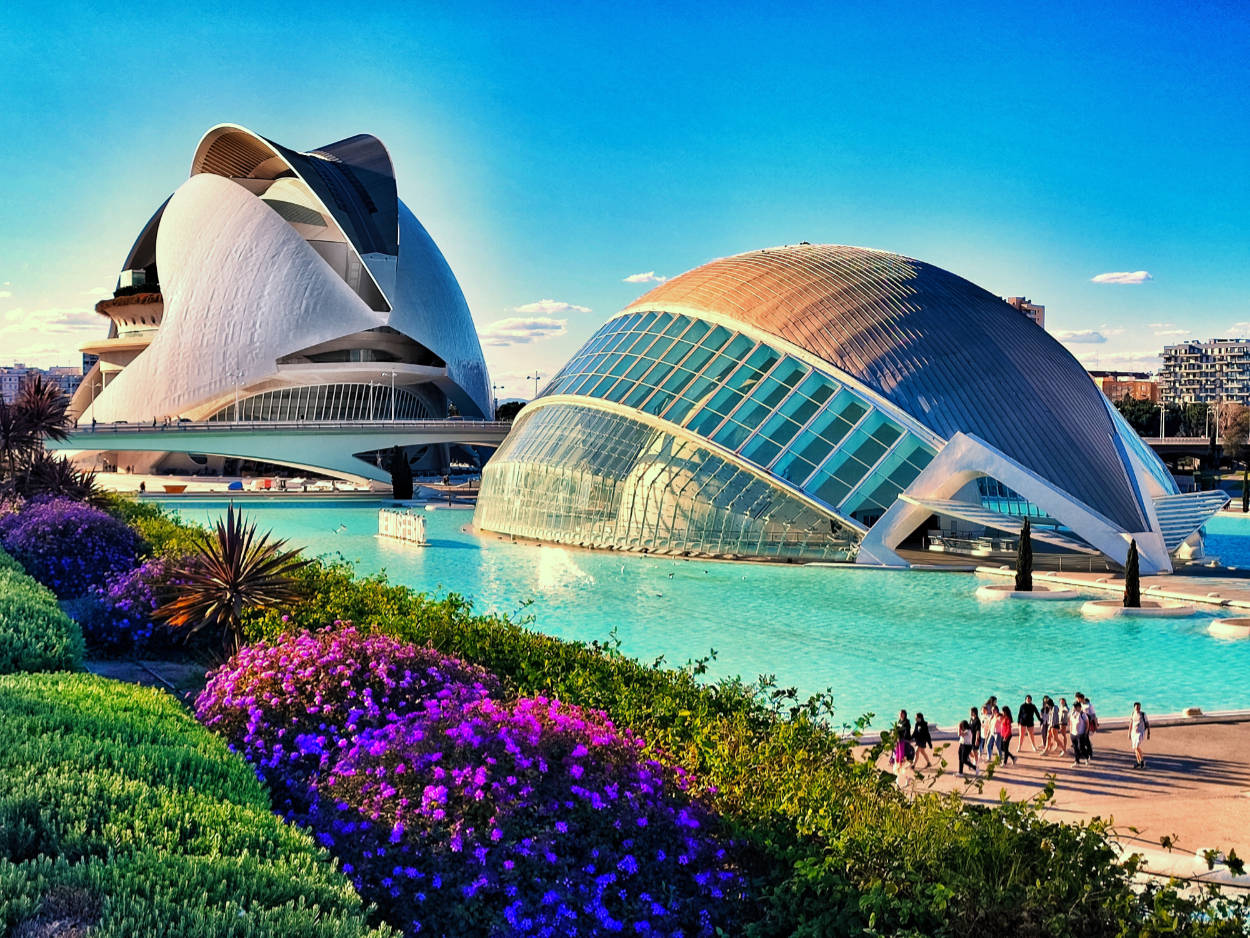
The Winning Formula: Sun, Safety, and Savings
The Live and Invest Overseas ranking considered several key metrics essential to retirees, including safety, the cost of living, and the funds required for relocation. Valencia excelled across the board due to its unique combination of practical benefits and exceptional quality of life.
Mediterranean Climate and Lifestyle
Valencia is blessed with over 300 days of sunshine each year, providing a quintessential Mediterranean climate with mild winters and bright, sunny summers. This perfect weather contributes significantly to the city's quality of life, encouraging residents to walk, socialise, and enjoy outdoor life year-round.
Crucially, Valencia offers the best of both worlds: the peace of its residential districts alongside the vibrancy of a modern urban centre. The pace is generally gentler than in larger European capitals, yet the city never lacks for rich cultural events, social opportunities, or stunning historic architecture like the City of Arts and Sciences.
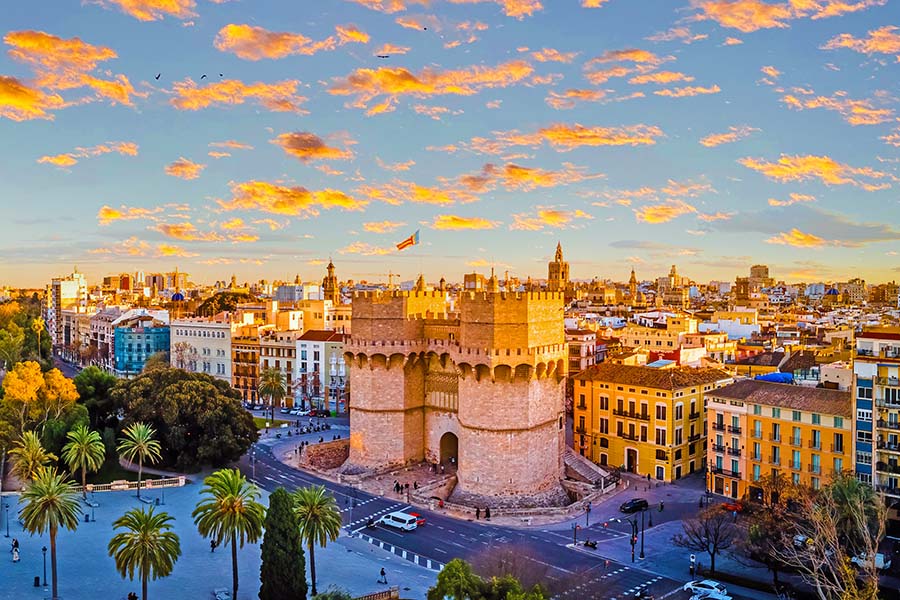
Economic and Healthcare Advantages
One of Valencia's most compelling draws is its low cost of living compared to other major hubs like Paris, Berlin, or Rome. While growing international interest has led to some increases, housing prices remain considerably more competitive.
For day-to-day expenses, the difference is striking:
-
Groceries: Fresh produce is readily available at local markets for reasonable prices.
-
Dining Out: Eating well is a part of everyday life, with affordable options for high-quality Mediterranean cuisine, including the city's iconic paella.
-
Transport: The public transport network is both efficient and inexpensive.
Furthermore, Spain’s public health system is internationally renowned. Valencia boasts an excellent network of major hospitals and private clinics, offering access to high-quality, affordable medical care. For added peace of mind, private health insurance in Spain is often much cheaper than in many other Western countries.
A Balanced View for Potential Residents
While the advantages far outweigh the drawbacks, prospective retirees should keep a few factors in mind for a smooth transition:
-
Property Prices: Neighbourhoods close to the coast have seen property prices rise, so finding affordable housing may require looking further inland or to different districts.
-
Summer Tourists: The annual summer influx of tourists can be bothersome if complete tranquillity is your primary goal.
-
Language and Bureaucracy: Learning Spanish is highly recommended for better integration into the community. Familiarising oneself with local bureaucracy and paperwork will also prevent unnecessary complications.
Ultimately, Valencia’s appeal as a retirement destination is simple: it delivers a beautiful, sunny, cultured, and safe environment where savings stretch further, allowing retirees to genuinely enjoy their golden years.
 1
Like
Published at 11:12 AM Comments (0)
1
Like
Published at 11:12 AM Comments (0)
The Shell - Camino de Santiago
Friday, October 3, 2025
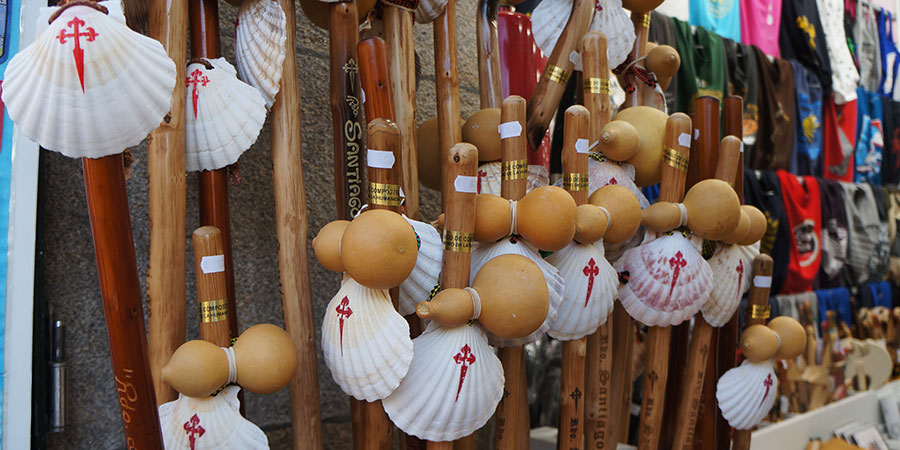
The scallop shell is one of the most iconic symbols of the Camino de Santiago and today it is used, along with the yellow arrow, to guide pilgrims heading to Santiago de Compostela along its many different routes. Painted on trees, sidewalks, tiles, etc… the scallop shell (or ‘vieira’ in Galician and Spanish) will help travellers find their way.
There are many stories, legends and myths trying to explain the ancient link between the scallop shell and the Saint James Way. It is no coincidence that in French the scallop is called Coquille Saint Jacques, while in German scallops are called ‘Jakobsmuscheln’ (James mussels).
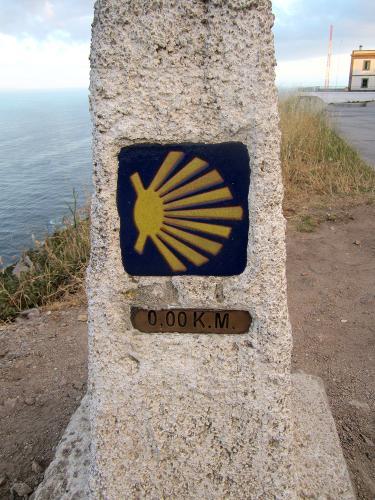 The scallop shell is said to be a metaphor, its lines representing the different routes pilgrims travel from all over the world, all walking trails leading to one point: the tomb of Saint James in Santiago de Compostela. However, it is open to interpretation. Which side points to Santiago? In some regions, the scallop’s longest line is considered the one pointing towards Santiago. This is the case in Asturias, for example, if you are walking the Camino Primitivo or the Camino del Norte, and some parts of the Camino Portugues. The scallop shell is said to be a metaphor, its lines representing the different routes pilgrims travel from all over the world, all walking trails leading to one point: the tomb of Saint James in Santiago de Compostela. However, it is open to interpretation. Which side points to Santiago? In some regions, the scallop’s longest line is considered the one pointing towards Santiago. This is the case in Asturias, for example, if you are walking the Camino Primitivo or the Camino del Norte, and some parts of the Camino Portugues.
But don’t let this fact confuse you, take the scallop shell as a symbol of the Camino, reassuring you are on the right path! The scallops are most of the time placed next to a yellow arrow so always follow the arrows (no confusion here!), as they are the most accurate ‘road signs’ to follow.
Medieval pilgrims often wore a scallop shell attached to their cloaks or hats during their journey to Santiago. More than being just a symbol or a pilgrim badge, the scallop shells also had a practical purpose: they were a handy and light replacement for a bowl so the pilgrims could use them to hold their food and drink on their long journey. Pilgrims would also be given food at churches and other establishments, and a scallop shell scoop was the measure for the food they would be donated.
Since the scallop is native to the coast of Galicia, the shell also became a memento, a physical proof of having completed the pilgrimage to Santiago (and quite often walked to or via Fisterra, on the Costa da Morte). The shells could be picked up at the very end of the journey in Fisterra but also became a popular souvenir and source of business for the shops near the Cathedral in Santiago and other establishments along the way.
 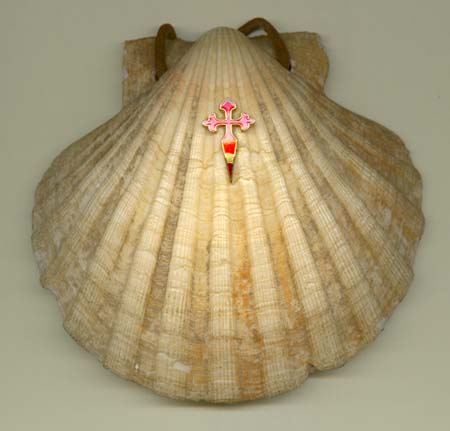
There are many legends trying to source this old association of Saint James with the scallop shell: one of those legends says the apostle once rescued a knight covered in scallop shells, while a similar version of the same story explains that a knight’s horse fell into the water and emerged covered in scallop shells, while the remains of Saint James were being taken from Jerusalem to Galicia.
There are also many stories about the scallop shell believed to have a much earlier origin, dating to pre-Christian times. It is understood the Camino de Santiago had also become a kind of fertility pilgrimage, taken by couples in need of help to have children. This could be related to the fact that the scallop shell might have been a pagan symbol of fertility, originally.
The shape of the scallop shell also resembles the setting sun, which would have been an important daily event, full of symbolism in pre-Christian societies. It is probably not just a mere coincidence that the Saint James Way is a journey to the West, finishing at the ‘end of the world’ (the name given to Fisterra – Finis Terrae) and the setting sun.
 1
Like
Published at 6:01 PM Comments (1)
1
Like
Published at 6:01 PM Comments (1)
The Feria de Albacete - over 3 Million visitors in 2025
Friday, September 19, 2025
Nestled in the heart of Spain, Albacete becomes an epicentre of colour, culture, and celebration come September. La Feria de Albacete, a festivity steeped in tradition and exuberance, draws visitors from all corners of the world, eager to witness and partake in its vibrant offerings. But what are the origins of this event? Let's delve into the rich history and multifaceted content of La Feria de Albacete to reveal why it's considered one of Spain's must-experience festivities.

The Feria de Albacete dates back to the 13th century, specifically to the year 1200. It was originally established by the privilege of the royal charter granted by King Alfonso VIII of Castile, designed to boost local trade and agriculture. However, the fair as we know it today, with its blend of cultural, social, and economic gatherings, began to take shape in the 18th century.
The festival, traditionally held from the 7th to the 17th of September, coincides with the feast of the Virgin of Los Llanos, the patron saint of Albacete. This coincidence is not accidental; the religious aspect deeply intertwines with the fair's historical customs and practices, adding a spiritual dimension to the celebrations.
La Feria de Albacete
Vibrant Parades

The opening of La Feria is marked by the 'Cabalgata de Apertura,' a grand parade that weaves through the city streets, signalling the start of ten days of ceaseless festivities. Colourful floats, traditional folk music bands, and dancers in elaborate costumes captivate both locals and tourists, setting the tone for what's to come.
A Cultural Mosaic
At the heart of La Feria is the 'Recinto Ferial,' (pictured above) the fairground located within the city. Once there, attendees can immerse themselves in a cultural mosaic that showcases the region’s heritage through music, dance, and regional cuisine. From the pulsating rhythms of flamenco to the taste of manchego cheese and the sight of artisan craftwork, the fairground offers something for every palate and interest.
Bullfighting
Bullfighting is an integral part of La Feria, attracting aficionados to the Plaza de Toros de Albacete, one of the city's landmarks. These events feature some of Spain's top toreros and bulls, providing a spectacle that remains a deeply ingrained tradition in the local culture.
 - Copy 1.jpeg)
Concerts and Nightlife
As the sun sets, La Feria de Albacete transforms into a hub of nocturnal activity. National and international artists take the stage, offering a variety of concerts that cater to a wide range of musical tastes. Simultaneously, the fairground and surrounding areas teem with life, as bars and temporary stalls serve up local beverages and snacks, fostering a communal atmosphere well into the early hours.

Family-Friendly Activities
La Feria is a celebration for all ages. Children can enjoy a variety of activities, from amusement rides and games to puppet shows and workshops designed to educate and entertain in equal measure.

La Feria de Albacete is more than just a fair; it's a vibrant celebration of life, culture, and tradition. Its origins, deeply rooted in history and spirituality, provide a backdrop for a festival that embraces modernity while honouring its past. Whether you're drawn by the allure of traditional festivities, the thrill of bullfighting, the joy of music and dance, or simply the desire to experience the warmth of Spanish hospitality, La Feria de Albacete promises unforgettable memories. As summer wanes, the magic of Albacete beckons, offering ten days of joy, reflection, and celebration in the heart of Spain. Why not put it on the calendar for next year?!
 4
Like
Published at 9:45 PM Comments (0)
4
Like
Published at 9:45 PM Comments (0)
Castellón's Enchanting Medieval Villages: A Journey Through Time
Saturday, September 6, 2025
In the heart of Spain's Castellón province lie eight remarkable medieval villages, each a testament to a rich and storied past. These enchanting destinations offer a captivating glimpse into history, with their ancient stone walls, winding cobblestone streets, and stunning architecture. Whether you're a history buff, a lover of picturesque landscapes, or simply seeking an escape from the modern world, these villages are a must-visit.
Morella is a true masterpiece, crowned by its imposing castle and medieval walls. This town feels like a living museum, with its narrow streets and Gothic church. Visitors can explore the castle, walk along the ancient walls, and immerse themselves in the town's vibrant history.
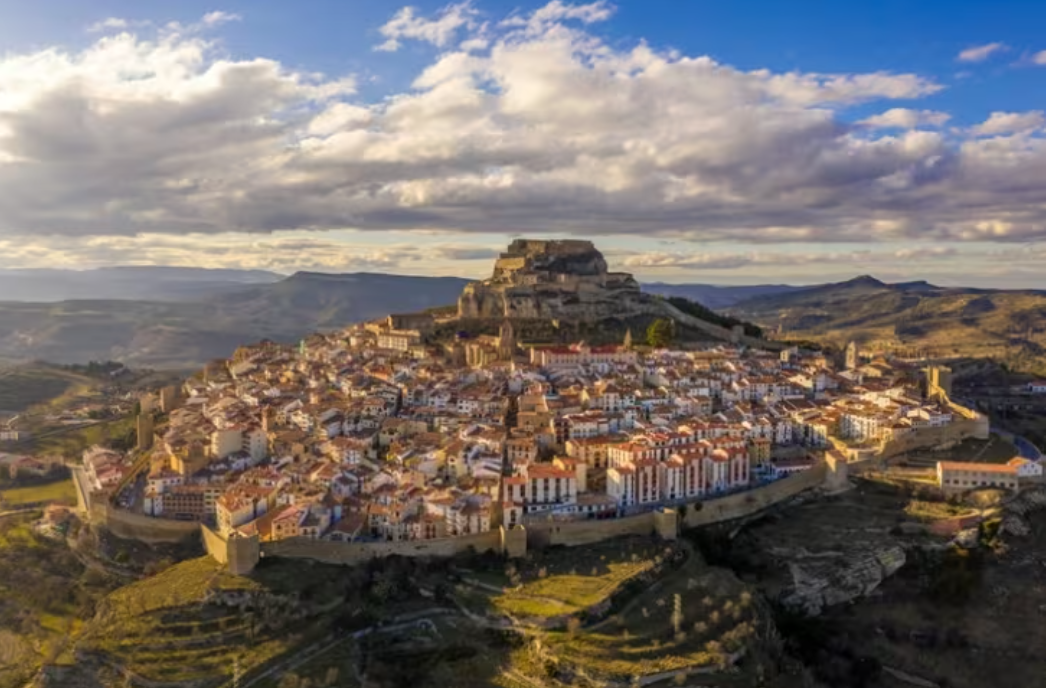
Peñíscola, often called the "Gibraltar of Valencia," is a coastal gem perched on a rocky headland. It's magnificent, Papa Luna Castle, a fortress built by the Knights Templar, overlooks the Mediterranean Sea. The town's historic centre is a maze of charming streets, whitewashed houses, and traditional shops.
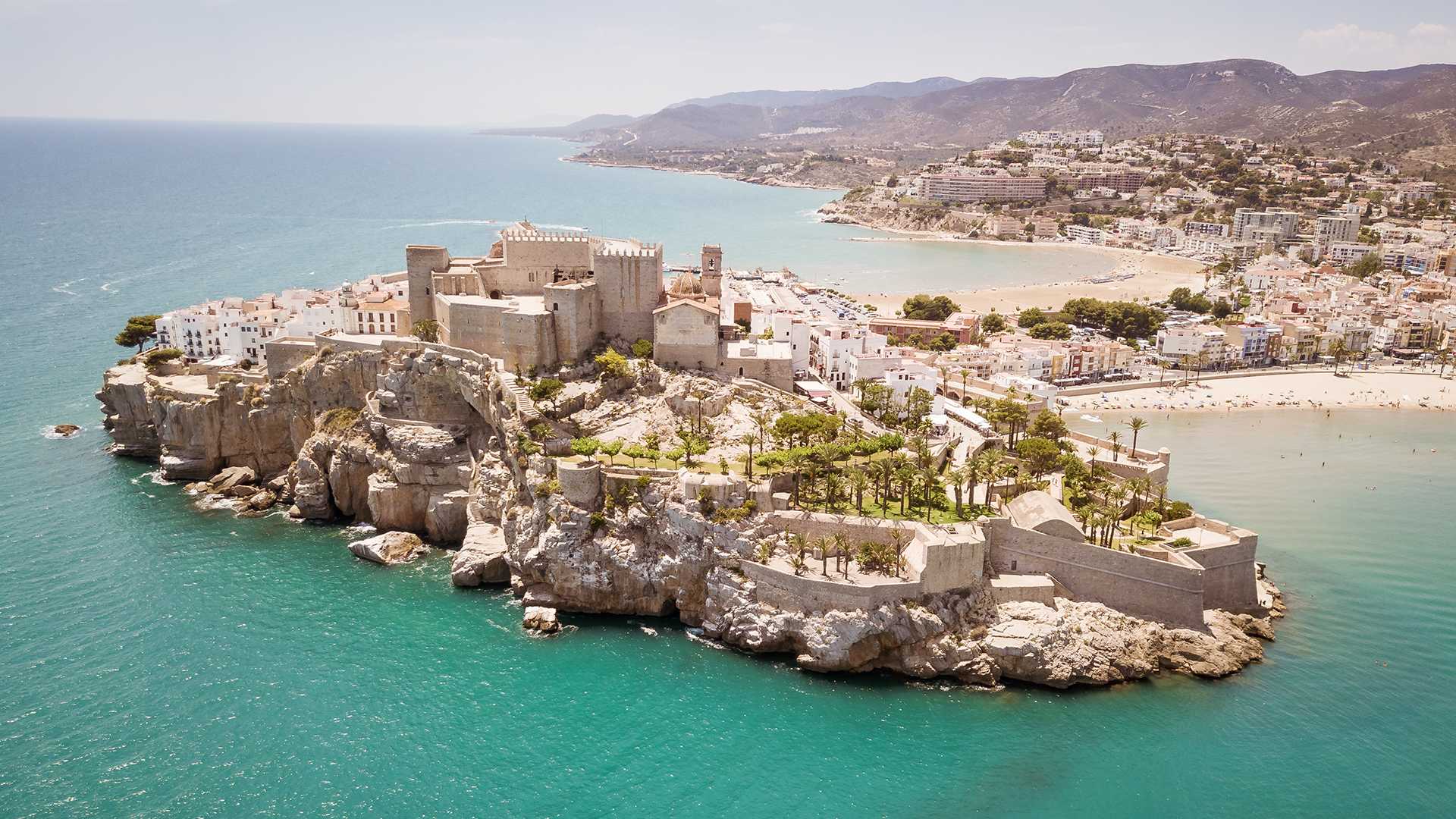
Vilafamés is a village of art and history, distinguished by its unique red rock formations and ancient castle. Its well-preserved old town and contemporary art museum make it a perfect blend of past and present.
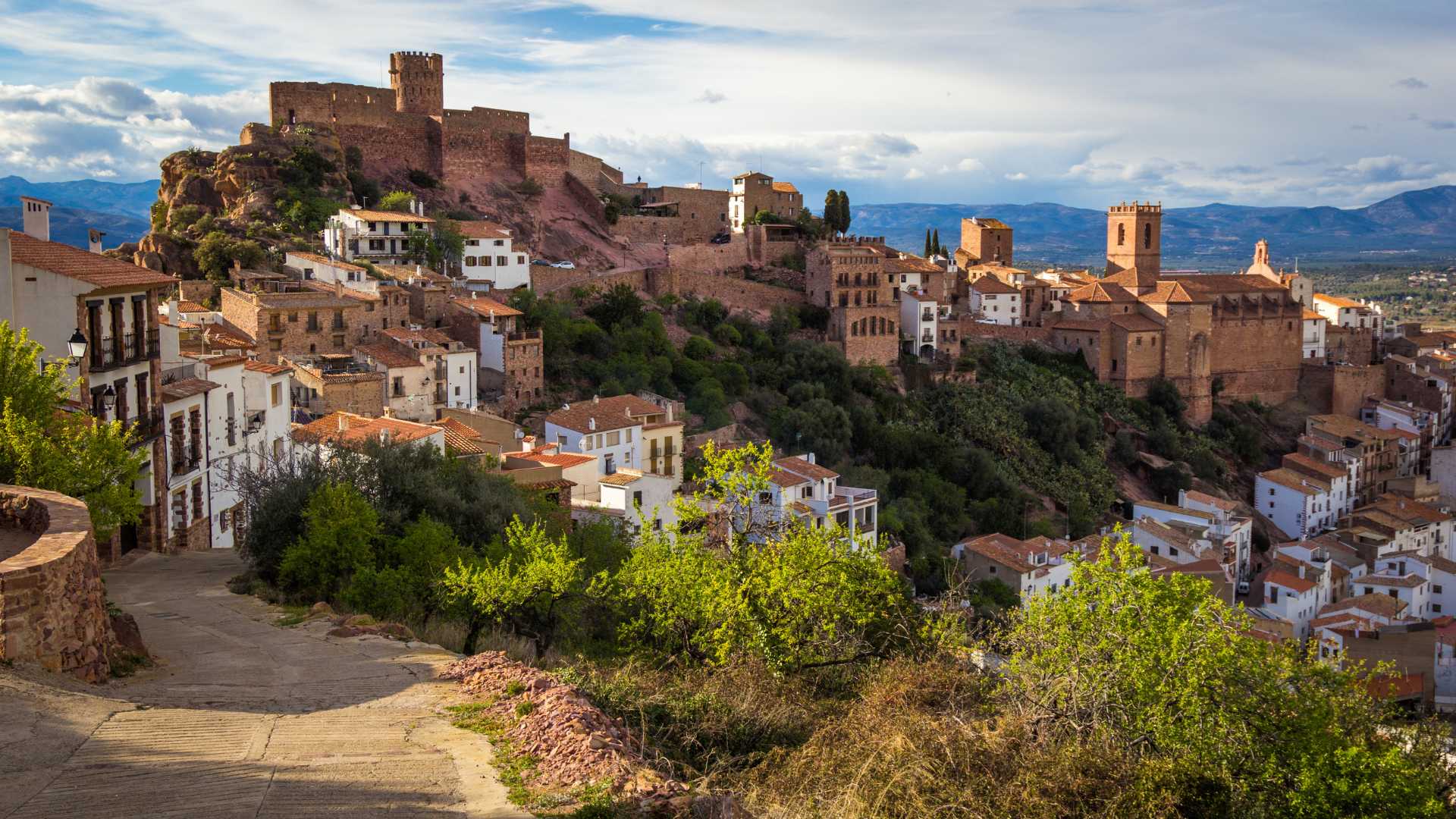
Culla offers a journey to the interior of Castellón, with its stunning panoramic views and a beautifully preserved medieval quarter. The village is known for its "Order of Malta" historical complex, which tells the story of its crusader past.
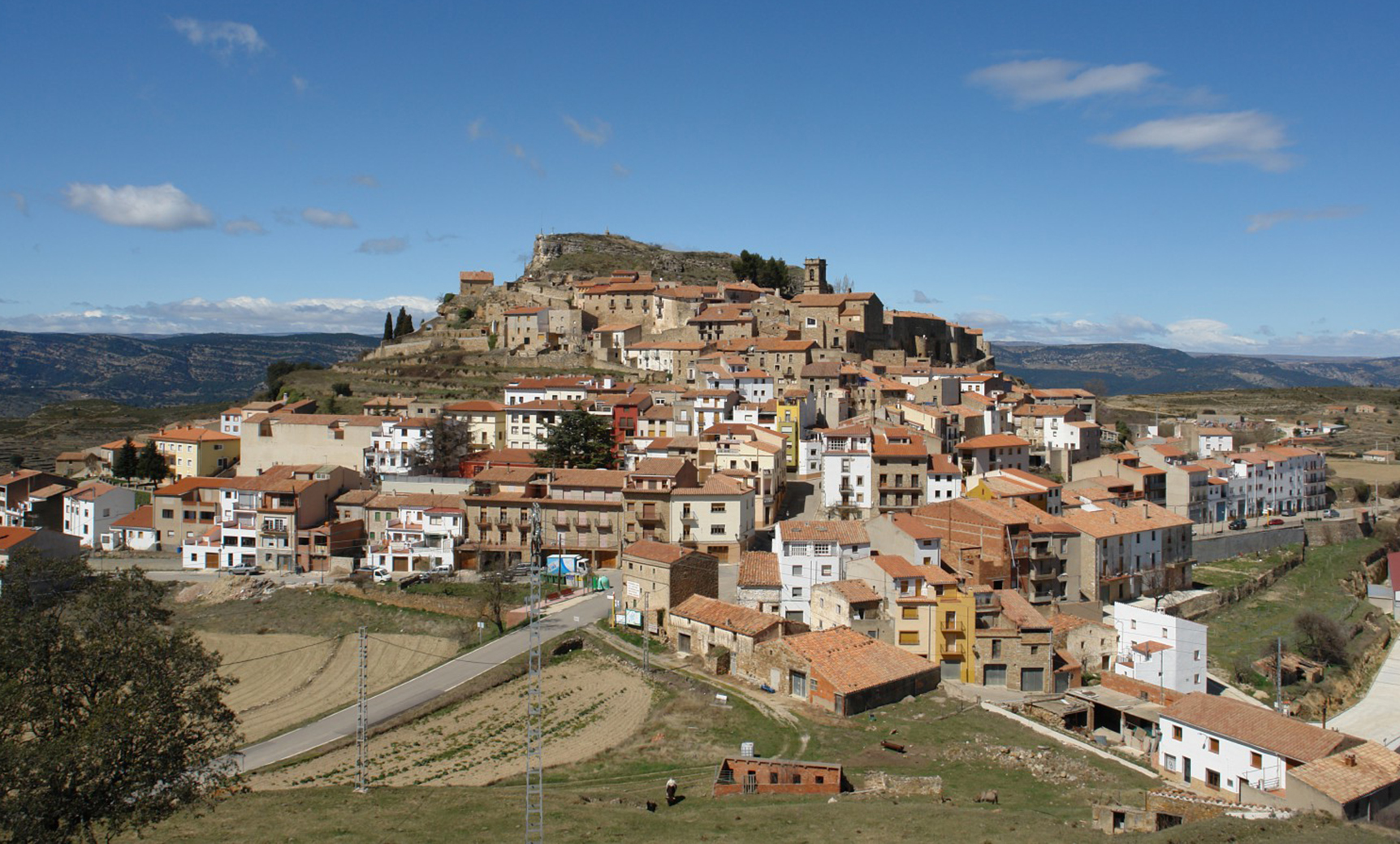
Mascarell stands out with its incredibly well-preserved complete medieval wall, a rare sight in the region. This small village is a testament to history, inviting visitors to walk through its peaceful streets and admire its unique fortifications.
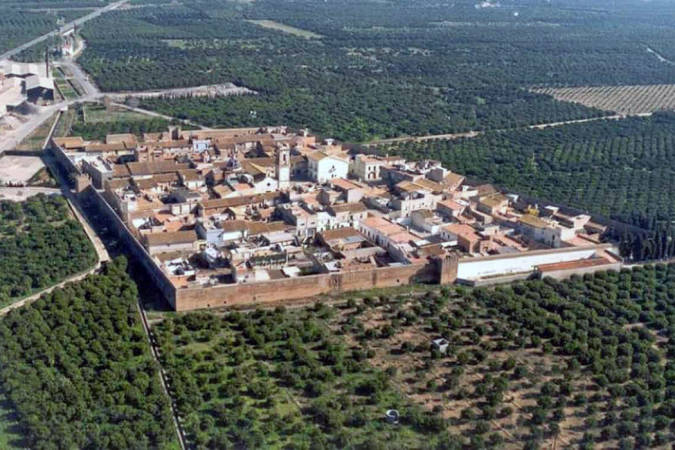
Sant Mateu was once a key strategic point and the centre of the Order of Montesa. Its historical significance is evident in its impressive Gothic buildings, including the Archpriestal Church. The town's elegant squares and noble houses evoke a sense of its past grandeur.
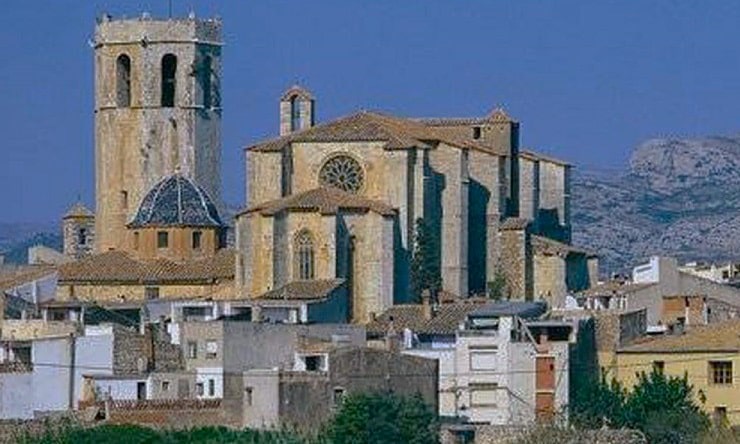
Ares del Maestre is perched dramatically on a rocky promontory, with its castle and church dominating the landscape. The village offers breathtaking views and a truly immersive medieval experience, with its "Nevera" (ice well) and ancient stone pathways.

Segorbe is a historical city with a rich heritage, including an aqueduct, a cathedral, and a significant medieval quarter. Its well-preserved walls and gates invite exploration, revealing layers of Roman, Moorish, and Christian history.
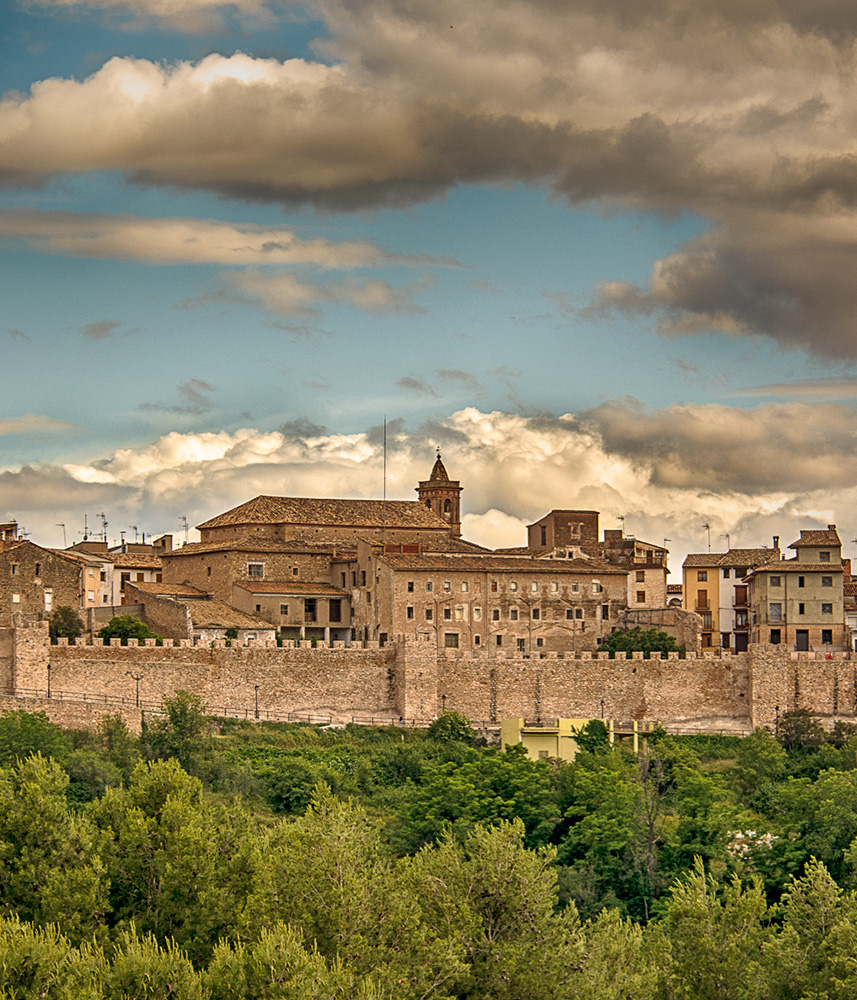
These eight medieval villages of Castellón are more than just tourist destinations; they are guardians of history, each with a unique story to tell. A visit to any of them is a step back in time, promising an unforgettable journey into Spain's rich cultural tapestry.
 3
Like
Published at 7:30 AM Comments (0)
3
Like
Published at 7:30 AM Comments (0)
Spam post or Abuse? Please let us know
|
|